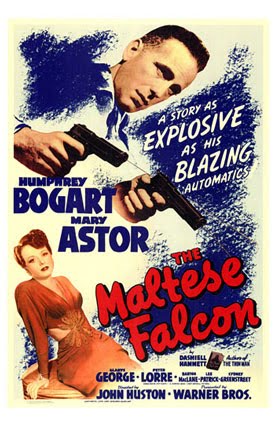The Day of The Locust

When I first saw the title, I assumed it was a grotesque horror film. Then I learnt that it's about Hollywood in the 1930's. That title sure looked misleading.
The film starts with Tod Hackett (William Atherton), a young art director who falls in love with deluded aspiring starlet Faye Greener (Karen Black). With the jazzy music and the pretty thirties dresses, it all looks very like a Fitzgerald novel. Karen Black was also in the 1972 version of The Great Gatsby and one can draw parallels with Faye and Daisy. Both films are also very slow paced, with a lot of silences.
Anyway, initially this seems to be a straight-forward tragic romance- the guy who loses his girl to Hollywood- but there is more to it than that. Throughout the film, we are slowly introduced to a variety of grotesques- the petulant bratty child actor; Faye's father who relives his glory days as a vaudevillian but has been forced to become a travelling salesman; Faye shows herself to be a manic nymphomaniac and narcissist; and finally, Homer Simpson, a middle-aged man hopelessly in love with Faye (Donald Sutherland). You can see why Groening pinched the name- Homer is incredibly dumb and naive. He is also incredibly sexually repressed-a repression which causes a bubbling tension throughout the film.
A sinister tone creeps into the film about twenty minutes in. Though it's not clear what's going to happen, we know that the underlying creepiness of Homer Simpson and indeed the whole film, must lead to something. It does, in one of the most climactic and shocking scenes in film history. Some might think it's "over the top" or "ridiculous"- well, welcome to Hollywood. Director John Scheslinger relishes the gaudy epic surreal qualities of Hollywood and though the film does feel too long, it's haunting.
Mistaking the title for being a horror film about grotesque creatures isn't really a mistake at all. That's exactly what the film is.

When I first saw the title, I assumed it was a grotesque horror film. Then I learnt that it's about Hollywood in the 1930's. That title sure looked misleading.
The film starts with Tod Hackett (William Atherton), a young art director who falls in love with deluded aspiring starlet Faye Greener (Karen Black). With the jazzy music and the pretty thirties dresses, it all looks very like a Fitzgerald novel. Karen Black was also in the 1972 version of The Great Gatsby and one can draw parallels with Faye and Daisy. Both films are also very slow paced, with a lot of silences.
Anyway, initially this seems to be a straight-forward tragic romance- the guy who loses his girl to Hollywood- but there is more to it than that. Throughout the film, we are slowly introduced to a variety of grotesques- the petulant bratty child actor; Faye's father who relives his glory days as a vaudevillian but has been forced to become a travelling salesman; Faye shows herself to be a manic nymphomaniac and narcissist; and finally, Homer Simpson, a middle-aged man hopelessly in love with Faye (Donald Sutherland). You can see why Groening pinched the name- Homer is incredibly dumb and naive. He is also incredibly sexually repressed-a repression which causes a bubbling tension throughout the film.
A sinister tone creeps into the film about twenty minutes in. Though it's not clear what's going to happen, we know that the underlying creepiness of Homer Simpson and indeed the whole film, must lead to something. It does, in one of the most climactic and shocking scenes in film history. Some might think it's "over the top" or "ridiculous"- well, welcome to Hollywood. Director John Scheslinger relishes the gaudy epic surreal qualities of Hollywood and though the film does feel too long, it's haunting.
Mistaking the title for being a horror film about grotesque creatures isn't really a mistake at all. That's exactly what the film is.
__________________
You cannot have it both ways. A dancer who relies upon the doubtful comforts of human love can never be a great dancer. Never. (The Red Shoes, 1948)
You cannot have it both ways. A dancer who relies upon the doubtful comforts of human love can never be a great dancer. Never. (The Red Shoes, 1948)


















